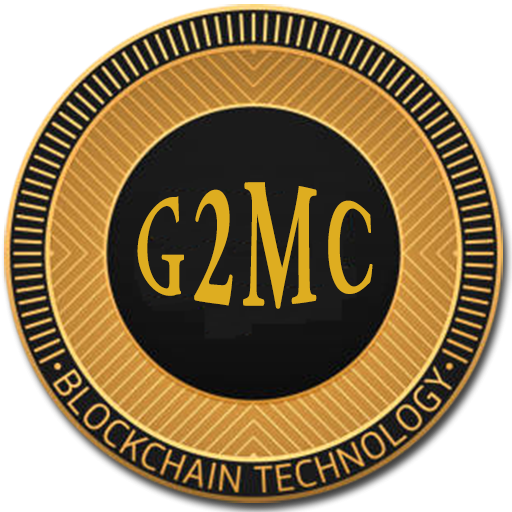What Does Altcoin Mean?
Altcoin (Alternative coin) originally refers to all digital cryptocurrency launched following the success of Bitcoin; hence the name, which means “alternative to Bitcoin”. However, more recently, the term Altcoin has increasingly been used to classify another other than Bitcoin and Ethereum. Nowadays, there are thousands of Altcoins with new projects being launched daily.
Key Highlights
- Altcoins now refer to any cryptocurrency other than Bitcoin and Ethereum but originally was meant to refer to ‘Alternative to Bitcoin’.
- There are many different types of Altcoins, but they can fit into either Payment Cryptocurrency, Utility Token, Stablecoin or Central Bank Digital Currency.
Market Capitalization
Let’s look at Altcoins by market capitalization, where market capitalization is simply the amount of an asset outstanding multiplied by the market price of each of those assets. Using that as a proxy for the value of the cryptocurrency, it is no surprise that the two most valuable are Bitcoin and Ether, the token for the Ethereum network.
Looking at the table below, you can see that those two cryptocurrencies dwarf the rest of the top 10 and are among the most established in terms of how many years they have been around. Hence, these two coins are generally looked at separately.
Types of Altcoins
Despite the myriad of uses that each of the thousands of Altcoin tokens in existence have, there are generally four types of uses for Altcoins.
1. Payment Cryptocurrencies
The purpose of a digital payment cryptocurrency is simply as a peer-to-peer electronic cash to facilitate transactions. Generally speaking, this sort of cryptocurrency has a dedicated blockchain that only supports its purpose as a medium of exchange. The blockchain that this sort of cryptocurrency is built upon generally is not designed to run smart contracts as speed and low transaction costs would be favored in this sort of digital asset. Another key is that Payment Cryptos should have a finite supply, which ensures that it can maintain its value.
Examples: Ripple (XRP), Dogecoin (DOGE)
2. Utility Tokens
Utility Tokens are a digital token that provide some sort of usefulness to the holder. These tokens can be further broken down to subcategories, such as:
a. Financial Tokens
These types of tokens are used to pay for access to a cryptocurrency exchange platform or for discounted fees (also known as an Exchange Token). An example would be Binance’s BNB Coin.
There are also financial tokens that serve as proof of fractional ownership so each token represents ownership to another security or asset – somewhat similar to crowdfunding. These types of tokens are called Security Tokens.
b. Infrastructure Tokens
The most famous infrastructure token is Ether, the native token for the Ethereum network. The use case for infrastructure tokens is to pay for transaction fees to process smart contracts, transfers or Dapps on the network. In addition to Ether, two popular examples are Cardano (ADA) and Solana (SOL).
c. Governance Tokens
Governance Tokens give its holders a right to vote on significant changes within a cryptocurrency network, in order to maintain the decentralized nature of the network. This allows the community, through their votes, to decide on proposals, rather than focus the decision-making power in a small group.
Example: MakerDAO (MKR)
d. Service Tokens
Some cryptocurrency projects issue Service Tokens that grant the holder access to or allow them to perform something on a network. One such type of this service token is Storj, an alternative to Google Drive, Dropbox, or Microsoft Onedrive. The platform rents unused hard drive space to those looking to store data in the Cloud. These users would pay for the service in Storj’s native utility token.
e. Media and Entertainment Tokens
Media and Entertainment Tokens are used for content, games, and online gambling. An example is Basic Attention Token (BAT), which awards tokens to users who opt-in to view advertisements, which then can be given to top content creators as a way of monetizing their efforts.
3. Stablecoins
Stablecoin is a type of altcoin that tries to tackle price fluctuations to maintain a more stable price.
The way of doing this is to link the stablecoin’s market value to some external reference, most commonly a fiat currency like the USD, although some stablecoins are linked to commodities, such as a precious metal like gold.
The price stability can be achieved by collateralizing it with some underlying asset – real, fiat or virtual.
Being asset-backed enables stablecoins to maintain their prices and avoid excess volatility, which essentially defines the cryptocurrency market.
There is another type of stablecoin that is not collateralized but rather uses algorithms to balance supply and demand to maintain a stable price.
4. Central Bank Digital Currencies (“CDBC”)
Central Bank Digital Currency or Central Bank Digital Coin, is a virtual currency that is issued by a central bank of a country or region, making it centralized. This digital fiat currency is issued by central banks in token form or with an electronic record associated with the currency and pegged to the domestic currency of the issuing country or region.
Since this digital currency is issued by central banks, the central banks maintain full authority and regulation over the CBDC, partially to address the fraud and risk with private cryptocurrencies. The implementation of a CBDC into the financial system and monetary policy is still in the early stages for many countries; however, over time it may become more widely adopted.
Central Banks have not only studied CBDCs but some have already experimented with them. For instance, the Bank of Canada, the Monetary Authority of Singapore the Riksbank and the People’s Bank of China are among those Central Banks who are furthest along. While opponents argue that the it may be the right place for Central Banks to implement a cryptocurrency, clearly the present situation of fraud and risk with private cryptocurrencies isn’t working either.
CBDCs are not to be confused with a country using an existing cryptocurrency as legal tender, like we saw with El Salvador in September 2021. Additionally, while CBDCs will have a family resemblance to payment cryptocurrencies like Bitcoin, they will have a centralized and permissioned blockchain and supply controlled by the Central Bank. And for the most part, CBDCs are not meant to replace the existing fiat currency of a country or region but rather offer an alternative for lower-cost value transfer digitally.
The information on this page is not intended for market placement decisions. Global Meta Media Consortium® and/or g2mc.world does not provide investment advice. Do your research before taking a market position on the purchase of cryptocurrency and other asset classes. Past performance of any asset is not indicative of future results.
Global Meta Media Consortium® All rights reserved 2023.















